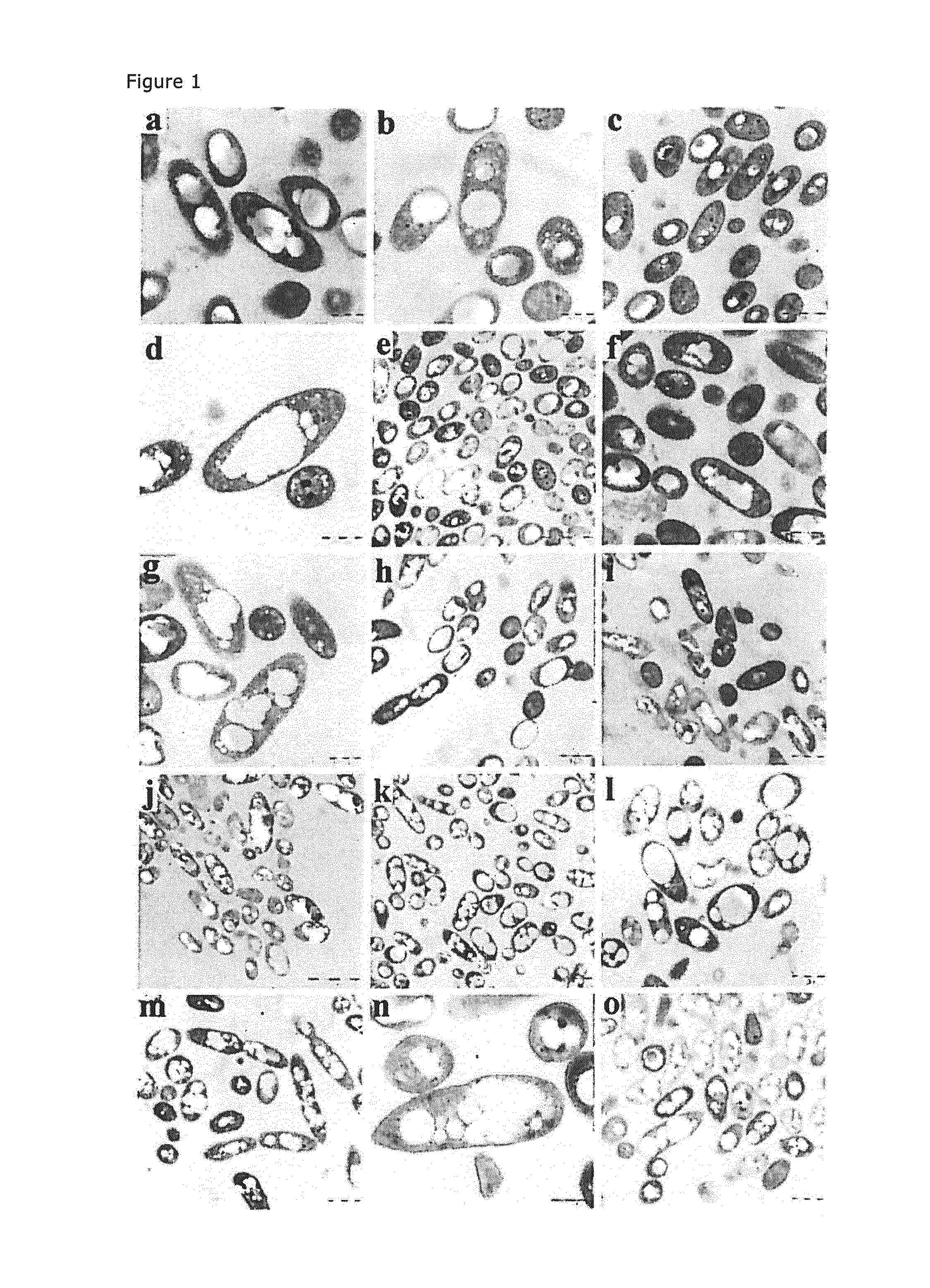Pha-producing genetically engineered microorganisms
a technology of genetic engineered microorganisms and pha-producing bacteria, which is applied in the field of pha-producing genetically engineered microorganisms, can solve the problems of difficult to produce high-quality materials, high cost of pha production and therefore unfavorable use, and major obstacles to their wider use, so as to increase the percentage of pha accumulation
- Summary
- Abstract
- Description
- Claims
- Application Information
AI Technical Summary
Benefits of technology
Problems solved by technology
Method used
Image
Examples
example 2
the ΔphaZ Mutation on PHA Production
[0095]A phaZ deletion mutant of the PpU 10-33 strain, designated PpU 10-33-ΔphaZ, was created and subsequently assessed for PHA accumulation. As can be seen in FIG. 4 and Table 2, cultures of the mutant exhibited higher PHA levels (62% wt) and, in contrast to the situation with the PhaZ-producing strains, these levels were maintained until at least 96 h of cultivation. Thus, the ΔphaZ knockout phenotype suggests that the PhaZ depolymerase is a major determinant of PHA accumulation and maintenance in the cell.
Reference Example: Complementation of the ΔphaZ-PpU10-33 Mutant
[0096]In order to causally relate the ,ohaZ gene mutation to the observed phenotype, and to rule out any indirect effects on expression of the pha cluster, the phaZ gene was PCRamplified, cloned in the pBBR1MCS-5 plasmid vector, and introduced into the PpU 10-33-ΔphaZ strain. PHA production and maintenance in the complemented mutant, PpU 10-33-ΔphaZ pMC-phaZ, designated strain pMC-...
PUM
| Property | Measurement | Unit |
|---|---|---|
| temperature | aaaaa | aaaaa |
| temperature | aaaaa | aaaaa |
| exposure time | aaaaa | aaaaa |
Abstract
Description
Claims
Application Information
 Login to View More
Login to View More - R&D
- Intellectual Property
- Life Sciences
- Materials
- Tech Scout
- Unparalleled Data Quality
- Higher Quality Content
- 60% Fewer Hallucinations
Browse by: Latest US Patents, China's latest patents, Technical Efficacy Thesaurus, Application Domain, Technology Topic, Popular Technical Reports.
© 2025 PatSnap. All rights reserved.Legal|Privacy policy|Modern Slavery Act Transparency Statement|Sitemap|About US| Contact US: help@patsnap.com



